Can Endlers and shrimp live together in the same tank? The simple answer is yes, but with a few important caveats. While Endlers do not typically prey on adult shrimp, they will eat smaller shrimp and shrimplets if the opportunity arises. Therefore, creating a safe and conducive environment for both to thrive is crucial.
Hello there, fellow aquatic enthusiasts! I’m a seasoned shrimp keeper, and I’ve had my fair share of experiences with keeping shrimp, specifically Red Cherry Shrimp (RCS), and Endlers together. It’s been quite a journey, filled with lessons and interesting observations. You’ll soon discover, as I did, that these two species can coexist in the same tank. However, it takes a little bit of strategy and understanding of their behavior.
The Behavior of Endlers and Their Impact on Shrimp
Endlers, also known as Endler’s livebearers, are popular aquarium fish known for their vibrant colors and active behavior. They’re small, generally peaceful, and usually stick to the top and middle layers of the tank, making them great for community tanks. But what happens when you introduce shrimp, particularly Red Cherry Shrimp (RCS), into the mix?
Let’s first address an important characteristic of Endlers: they are omnivores with a somewhat opportunistic feeding habit. This means they’ll eat a variety of foods, including small insects, algae, and even their own fry. Now, you might be wondering, does this apply to shrimp too? Unfortunately, the answer is yes.
If a shrimp or shrimp fry is small enough to fit into the mouth of an Endler, the likelihood of it being eaten increases. The size and age of the shrimp play a significant role in this. Smaller shrimp, especially young shrimp, are at a greater risk. Furthermore, the bright red coloration of the RCS does not aid in camouflage, making them more visible to the Endlers.
However, this does not mean that Endlers are dedicated shrimp predators. In a well-managed tank, Endlers will not actively hunt down adult shrimp. Instead, they might opportunistically eat a shrimp if it’s easy to catch and small enough to fit in their mouth.
Remembering that different Endlers may have slightly different behaviors is crucial. In my experience, larger female Endlers sometimes go after smaller adult shrimp. But, the majority of the time, they coexist peacefully with adult shrimp.
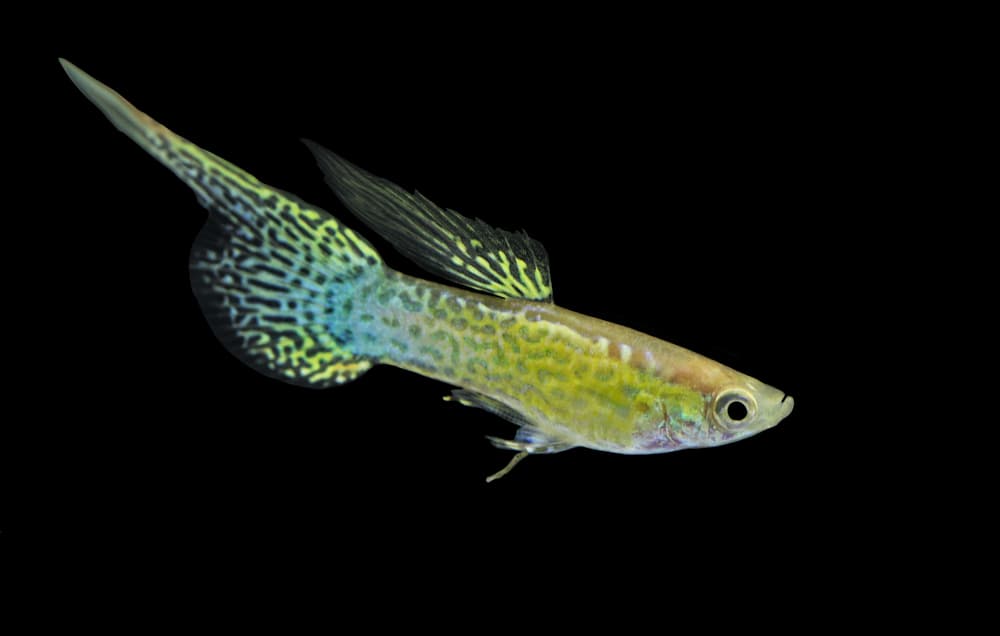
How to Create a Safe Environment for Shrimp in an Endler-Dominated Tank
Creating a safe environment for shrimp in an Endler dominated tank provides the shrimp with the conditions to thrive and evade predation. Here’s how you can set up a safe haven for your shrimp:
- Plenty of Plants and Hiding Spots: The more densely planted your tank is, the safer your shrimp will feel. Aquatic plants provide a myriad of hiding spots for shrimp, especially for the smaller ones that are at risk of predation. Java moss
 , anubias, and java fern are great choices as they’re easy to maintain and offer plenty of cover. Adding driftwood, rocks, and shrimp caves can also create additional hiding spots.
, anubias, and java fern are great choices as they’re easy to maintain and offer plenty of cover. Adding driftwood, rocks, and shrimp caves can also create additional hiding spots. - Maintain a High Shrimp Population: A high shrimp population can help deter predation. When there are more shrimp than the Endlers can eat, the shrimp population can continue to grow despite some being eaten. It’s like playing a numbers game; the more shrimp you have, the more likely they are to survive and propagate.
- Well-fed Endlers: A hungry Endler is more likely to consider shrimp as a potential meal. Ensure your Endlers are well-fed with a balanced diet of high-quality flake
 food, live food, and vegetables. This will reduce their likelihood of going after your shrimp.
food, live food, and vegetables. This will reduce their likelihood of going after your shrimp. - Tank Size and Setup: A larger tank will provide more space for the shrimp to spread out and find places to hide. In a cramped environment, shrimp are more likely to come into contact with Endlers and become a potential meal. So, consider the size of your tank and the number of inhabitants.
- Shrimp-Friendly Water Conditions: Maintain optimal water conditions for your shrimp. A stable environment will reduce their stress levels, making them less susceptible to illness and predation. This means stable temperature, pH, and hardness, and zero levels of ammonia and nitrites.
- Consider a Shrimp-Only Tank: If you find that your Endlers are still preying on your shrimp despite these measures, you might want to consider setting up a separate shrimp-only tank. This way, your shrimp can breed and grow in peace.
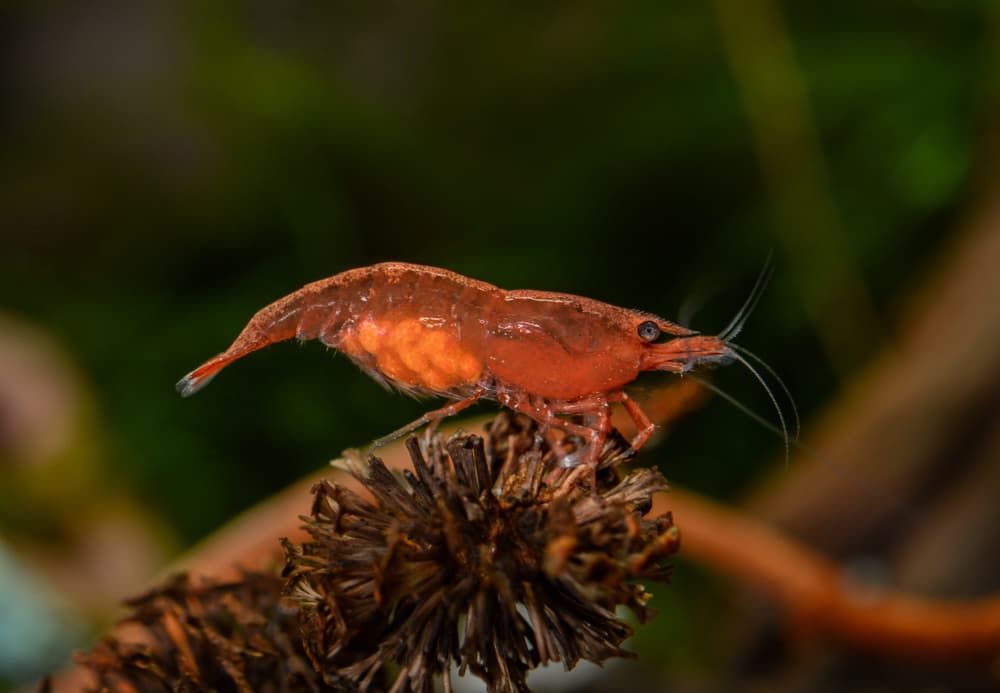
Understanding the Importance of Tank Size for Shrimp and Endler Cohabitation
When it comes to maintaining a harmonious cohabitation between Endlers and shrimp, the size of the tank plays a crucial role. It’s not just about having enough room for the inhabitants to swim around. The size of your tank can impact several key aspects of shrimp and Endler coexistence.
Room for Escape and Hiding: A larger tank inherently has more space for the shrimp to hide and escape from potential Endler predation. Small tanks tend to limit the number of hiding spots, making shrimp more exposed and vulnerable. In a spacious tank, shrimp have a better chance to keep out of the Endlers’ way, particularly when they are molting or if they are young and small.
Supports Larger Populations: The size of your tank directly impacts how many creatures it can comfortably support. A larger tank can support a higher shrimp population, which, as we’ve discussed earlier, can help ensure the survival and growth of the shrimp community despite some being eaten.
Helps Maintain Water Quality: Water parameters are critical for both shrimp and Endlers. Larger tanks tend to have more stable water conditions because the larger volume of water can dilute toxins and resist rapid changes in temperature and pH. This stability is beneficial for shrimp, which are often more sensitive to water conditions than fish.
Allows for More Plants and Decor: A larger tank provides more room for plants, decor, and other features that provide hiding spots and contribute to a more natural environment. This isn’t just good for the shrimp; it’s also beneficial for the Endlers who appreciate a well-planted tank.
Reduces Stress: Overcrowding can lead to stress, disease, and aggression among tank inhabitants. A suitably sized tank allows for adequate space for each creature, reducing stress and potential conflict.
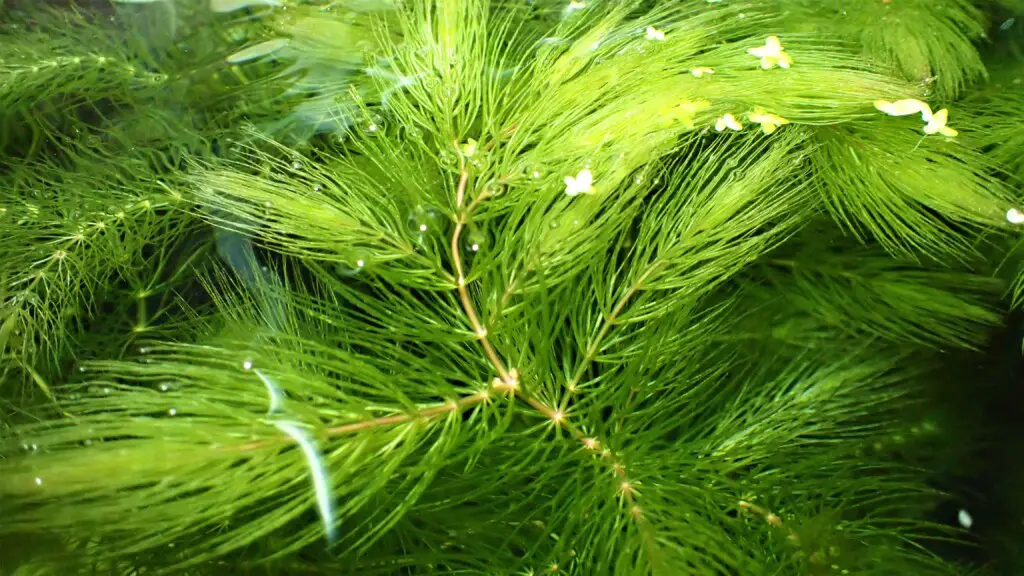
The Role of Plants and Hiding Places in a Shrimp and Endler Tank
Plants and hiding places play a crucial role in creating a thriving environment for shrimp and Endlers cohabitation. They are not just aesthetic additions but serve practical purposes that can significantly enhance the quality of life for both species.
Shelter and Safety: Aquatic plants and other hiding spots provide crucial shelter for shrimp, particularly young or molting ones that are vulnerable to predation. Dense plantings create a labyrinth of hiding spots, allowing shrimp to escape and hide from any potential Endler threats. The more hideaways you have, the higher the chances of your shrimp’s survival.
Breeding Ground: Shrimp often use plants and hiding places for breeding. They offer secluded and safe spots where shrimp can lay their eggs and where young shrimp can grow without being disturbed.
Food Source: Plants can also serve as a supplementary food source for both shrimp and Endlers. Shrimp love to forage on the biofilm that grows on plants and decor, while Endlers might nibble on soft plant leaves.
Water Quality Maintenance: Aquatic plants play a significant role in maintaining water quality. They absorb harmful chemicals such as nitrates and phosphates, which can be detrimental to both shrimp and fish if levels get too high.
Stress Reduction: For Endlers, a well-planted tank with plenty of hiding spots can reduce stress. Fish often feel safer and more secure when they have places to hide, which can lead to better coloration, increased activity, and overall healthier fish.
Visual Barriers: Plants and decor can serve as visual barriers in the tank, breaking up lines of sight. This can help reduce any potential aggression or territory disputes among the Endlers, making for a more peaceful community.
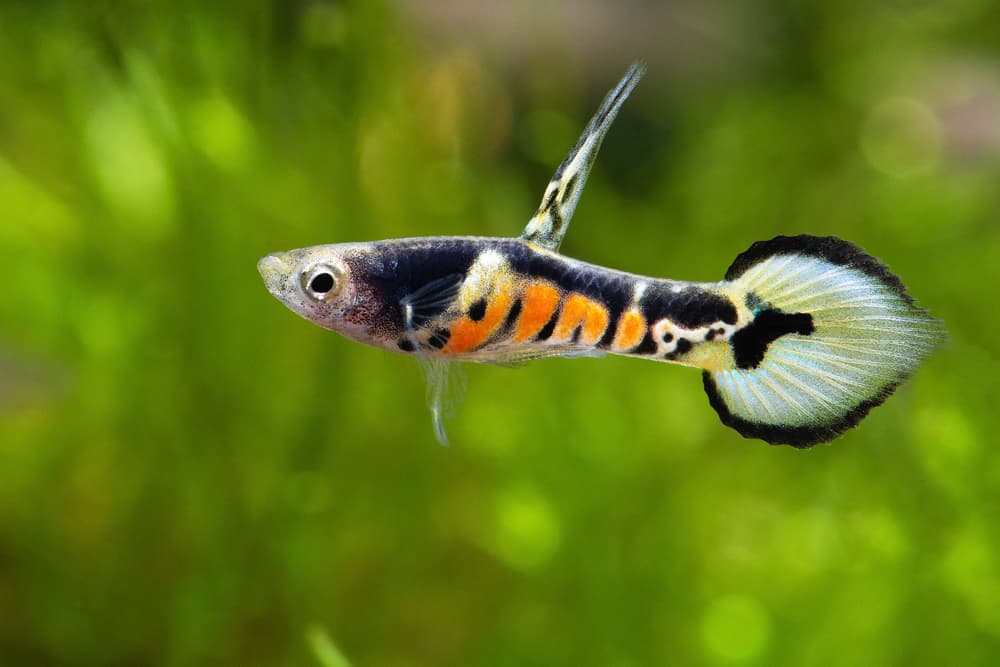
Feeding Strategies to Prevent Endler Predation on Shrimp
One of the critical aspects of reducing the likelihood of Endler predation on shrimp is effective feeding strategies. Ensuring that your Endlers are well-fed can help deter them from seeing your shrimp as a potential food source. Here are some strategies you can employ:
High-Quality and Balanced Diet: The first step is to provide your Endlers with a high-quality and balanced diet. This can include a mix of flake or pellet food, live or frozen food like brine shrimp or daphnia, and occasional vegetable matter. A diet that meets their nutritional needs will keep them full and satisfied, reducing the likelihood of them looking for additional food sources.
Regular Feeding Schedule: Implementing a regular feeding schedule can also deter Endlers from eating shrimp. Most hobbyists feed their fish once or twice a day. However, it’s essential to avoid overfeeding as it can lead to poor water quality, which is detrimental to both shrimp and Endlers.
Use of Sinking Food: When feeding, consider using sinking food that will reach the bottom of the tank for your shrimp. This ensures that your shrimp get their share of the food and are less likely to be out in the open scavenging, making them an easy target for the Endlers.
Distract the Endlers During Feeding: When it’s time to feed your shrimp, you can distract the Endlers with their own food. Once they’re busy eating, you can add the shrimp food. This will give the shrimp a chance to eat without being bothered by the Endlers.
Separate Feeding Areas: If possible, establish separate feeding areas for the Endlers and shrimp. You can do this by feeding the Endlers at one end of the tank and the shrimp at the other. This can help reduce competition for food and minimize interactions between the two during feeding times.
Remember, every tank and its inhabitants are unique, so it might take some trial and error to figure out the best feeding strategy for your specific setup. The goal is to ensure that both your Endlers and shrimp are getting the nutrition they need while minimizing conflict and predation. With the right feeding strategies, your Endlers and shrimp can coexist in harmony.
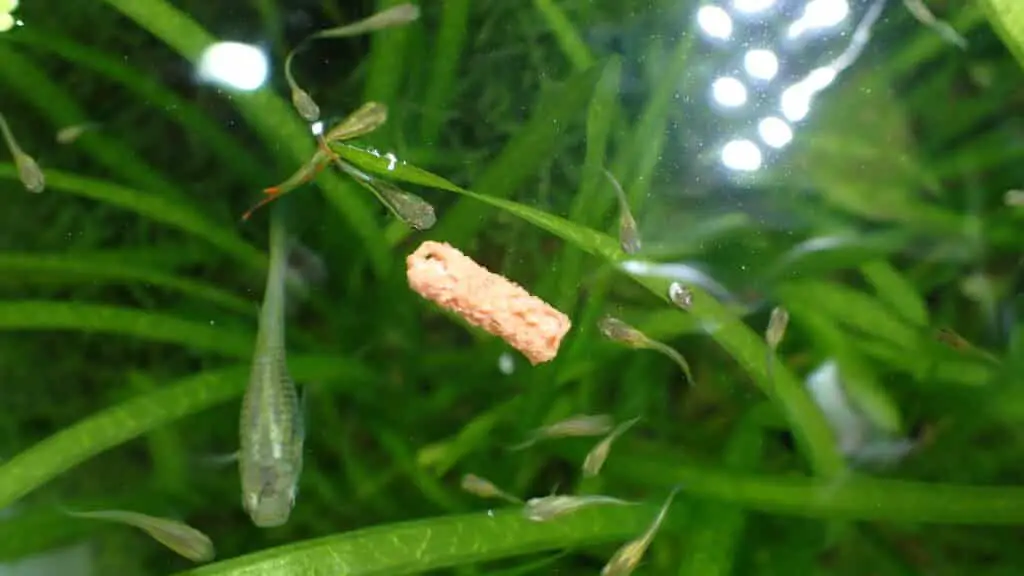
Conclusion: Striking a Balance for Happy Shrimp Keeping!
In conclusion, while Endlers and shrimp can live together, it’s crucial to ensure the right conditions to minimize predation. Creating a densely planted environment with ample hiding places, maintaining a large shrimp population, and keeping your Endlers well-fed can help maintain a balance. Remember, it’s all about playing the numbers game and tipping the scale towards the shrimp. With a little patience and strategy, you’ll soon have a thriving community of Endlers and shrimp. Happy Shrimp Keeping!
Frequently Asked Questions
Q. Can Endlers live with shrimp?
A. Yes, Endlers can live with shrimp. However, if the shrimp is small enough to fit in an Endler’s mouth, they may eat it.
Q. Will Endlers eat adult shrimp?
A. Typically, Endlers don’t prey on adult shrimp. However, they may eat smaller adult shrimp or shrimp fry if they can fit into their mouths.
Q. How can I prevent my Endlers from eating my shrimp?
A. To prevent Endlers from eating your shrimp, ensure you have a dense plantation in your tank to provide hiding places for the shrimp. Also, keep your Endlers well-fed.
Q. Will a high shrimp population deter Endlers from predation?
A. Having a high shrimp population in your tank can help. If the shrimp population is high, Endlers can’t eat them all, allowing the shrimp population to continue growing.
